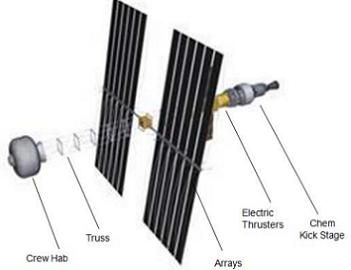Artificial intelligence is automating tasks in many domains. Do musicians have reason to worry?
Get the latest international news and world events from around the world.
Why tech giants are investing millions in AI that can play video games
For any AI people out there. I’d really like to see an AI get dropped into Ocarina of Time, and then Skyrim. The day an AI can be dropped into those, and complete the entire games, and go out and complete all the weird random tasks, it should be pretty close to human level.
AI just beat a top human professional in the game Dota 2, but the technology could help with much bigger strategic problems.


The carbon catchers of Climeworks
I was thinking about this thing, and the one in Iceland. Maybe we could build giant blimps in the atmosphere of Venus, it would carry that machine on its belly, and on the back of the blimp super advanced solar panels. Then inside of the blimp the CO2 could be mixed into liquid crystals or something like that and be dropped like rain down on the surface, to eventually terraform it.
Global Engineering — a phrase that describes steadying the world’s climate with technical solutions. A Swiss company has received EU funding to develop a machine that captures CO2. Can it really make a difference?



Wind powered a record of nearly 200 million European households on Saturday
On Saturday, a record 24.6% of total electricity came from wind power sources in the 28 countries of the European Union. The majority of this wind electricity was generated offshore (91.3%) vs onshore (8.7%).
With Europe moving into the high wind production winter period, we expect a new season of records being broken. And with massive scale construction continuing for offshore wind farms, these records of 2017 will soon look quaint.
The amounts of electricity generated were enough to power 197 million European households or 68% of all industrial electricity needs. Europe has about 500 million total people, with a land mass very close to that of the USA.


6 Ways to Talk to People about Ending Aging – Moscow Nov 4th
The Life Extension Advocacy Foundation, in collaboration with Singularity University Moscow Chapter and consulting group Deloitte, is hosting in Moscow an expert discussion on how to inform society about the potential and the advancement of gerontology and preventive medicine.
Life Extension Advocacy Foundation, in collaboration with Singularity University Moscow Chapter and consulting group Deloitte, are hosting in Moscow an expert discussion on how to inform society about the potential and the advancement of gerontology and preventive medicine. These experts believe that attracting people’s attention to the capabilities of medical technologies to prevent aging might help extend the healthy period of life and significantly decrease morbidity from age-related diseases.
The panel discussion “6 ways to talk to people about ending aging” will bring together famous futurists, scientists, science popularizers and public figures who foster the dissemination of the idea to prevent aging in Russia and other countries.
Jose Luis Cordeiro, fellow of the World Academy of Art and Science (WAAS), director of life extension advocacy organization Humanity Plus.

Boeing outlines technology for crewed Mars missions
With a focus on building the archetypal missions for NASA’s new Space Launch System rocket, the U.S.-based Boeing Corporation has outlined their view of what technologies can be used to accomplish humankind’s goal of visiting crews to the Martian system – missions Boeing believes are possible through the combination of the SLS rocket’s lift capability, the bourgeoning Solar Electric Propulsion technology field, and Bigelow’s soon-to-be-tested inflatable habitat modules.
From the Earth-Moon system to Mars:
Continuing from their initial presentation on potential SLS rocket uses beyond the opening two circumlunar missions, the Boeing Corporation has presented their idea of how to execute a phased approach to deep space exploration – with an eye for the eventual goal of landing human beings on the surface of Mars.